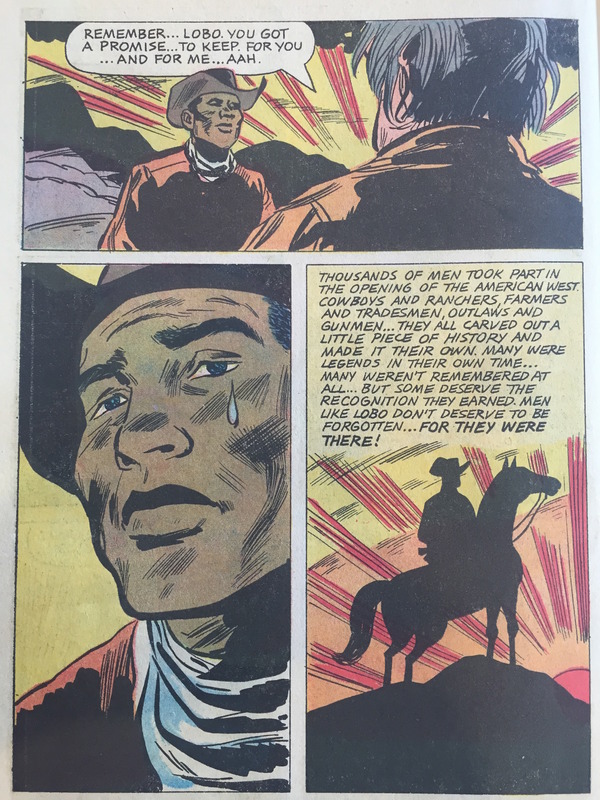Though created and written by two white men, the comic Lobo claimed its place in history as the first comic starring an African American. Following the conclusion of the civil war, former Union soldier, Lobo, moves to the west for a fresh start, but ends up framed for the robbery and murder of his cattle master. Due to his physical appearance, Lobo is able to embody both black and white characteristics, yet his blackness ultimately defines his masculinity.
In the climax of the first issue, when Lobo narrowly defeats his evil former colleagues, Lobo fails to save the man who has the knowledge that could free him of his wrongful accusations. In the scene directly following this setback, Lobo looks candidly off into the distance while a single tear flows from his sparkling blue eye and falls down his cheek. The illustrator’s choice to draw Lobo with blue eyes is highly significant. While black people may genetically inherit blue eyes through a mutation, it is more likely to occur as a result of interracial mingling. The introduction of blue eyes poses readers to question the authenticity of Lobo’s blackness by implying that he may be partially white. While this could be an attempt at whitewashing Lobo, his interracial nature makes practical sense because it allows for both black and white viewers to take pleasure and identify with aspects of Lobo.
Yet, regardless of the purity of his blackness, the presence of Lobo’s blackness cannot help but bring a sense of hypermasculinity to his character. Because “the black male body is already culturally ascribed as a site of hypermasculinity,” Lobo will always be rendered as hypermasculine (Brown 178). Due to Lobo’s blackness, the single tear can easily be Lobo’s deployment of the “cool pose”. Defined as a coping mechanism and “a strategy for many black males (…) against exploitation,” the “cool pose” allows black men to conceal the rage of being unable to be in control while also reinforcing stereotypes of black masculinity (Majors and Billson 171). Although Lobo’s final chance to prove his innocence died with the death of the man with the knowledge to save him, the single tear is the only emotion that he is able to show. This one tiny tear holds all of Lobo’s anguish and frustration over his permanent outlaw status, and this portrayal of Lobo’s hardness fortifies the emotional detachment and aloofness stereotype of black masculinity.
Brown, Jeffrey A. Black superheroes, milestone comics, and their fans. Univ. Press of Mississippi, 2000. Web.
Majors, Richard, and Janet Mancini Billson. "Cool pose: The dilemmas of African American manhood in America." New York: Lexington (1992). Web.
